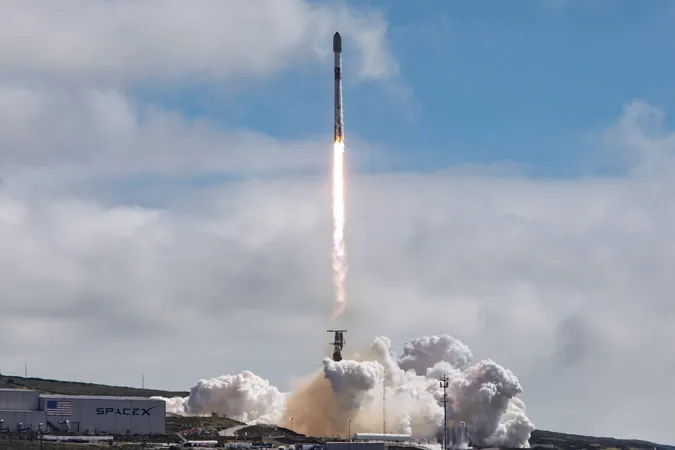
DARPA Stumbles Upon Revolutionary Rocket Detection Method Thanks to SpaceX
2025-04-02
Author: Ying
In an astonishing turn of events, researchers from the U.S. military’s Defense Advanced Research Projects Agency (DARPA) have unintentionally unveiled a groundbreaking method for detecting incoming rockets while studying Earth's atmosphere. This revelation came as the team was monitoring disturbances from a SpaceX Falcon 9 rocket as it plummeted through the atmosphere towards its landing site.
The team is engaged in the AtmoSense program, which aims to leverage the Earth's atmospheric data as a comprehensive global sensor network. By capturing acoustic and electromagnetic waves traveling through the atmosphere, DARPA intends to trace these signals back to various disturbance events, including underground explosions or potential national security threats.
Unexpected Discoveries During Observations
During a recent atmospheric observation initiative, while the researchers were focusing on sound waves generated by controlled explosions in New Mexico, they encountered a surprising anomaly in the sensor data. Michael Nayak, program manager of AtmoSense, described the incident: “As the team analyzed the data, they observed a significant drop in what's known as total electron content, which was perplexing. Picture water flowing through a hose; if you obstruct it with your fist, the water volume noticeably decreases.”
Upon further investigation, the team linked this disruption to a SpaceX Falcon 9 rocket reentry that happened simultaneously with their tests. Excited by this unplanned discovery, they decided to examine data from previous SpaceX reentries to check for similar electron decreases. "The phenomenon was consistently observable," Nayak noted, suggesting a highly repeatable pattern that could be leveraged for future applications.
Revolutionary Impact on Detection Technology
Utilizing the AtmoSense technology, the researchers have unofficially discovered a novel method for identifying objects reentering Earth's atmosphere — a potential game-changer for tracking both civilian and military spacecraft. Nayak and his team will present these findings during an upcoming virtual workshop scheduled for April 15 to 17, which promises to unveil more insights into this unexpected breakthrough.
SpaceX's Falcon 9 rocket, which has completed over 450 missions, is renowned for its efficiency and reliability. As a partially reusable, two-stage rocket, the Falcon 9 is capable of launching payloads into orbit before returning to Earth for a controlled landing, thus allowing for both recovery and reuse — a revolutionary advancement in aerospace technology.
This serendipitous discovery by DARPA, fueled by collaboration with SpaceX, opens doors to new frontiers in aerial surveillance and rocket tracking technology. As we move into a future where both civil and military air traffic increases, such innovations are not just beneficial but may be essential for national security and space exploration alike. Stay tuned for further details on this captivating development!





 Brasil (PT)
Brasil (PT)
 Canada (EN)
Canada (EN)
 Chile (ES)
Chile (ES)
 Česko (CS)
Česko (CS)
 대한민국 (KO)
대한민국 (KO)
 España (ES)
España (ES)
 France (FR)
France (FR)
 Hong Kong (EN)
Hong Kong (EN)
 Italia (IT)
Italia (IT)
 日本 (JA)
日本 (JA)
 Magyarország (HU)
Magyarország (HU)
 Norge (NO)
Norge (NO)
 Polska (PL)
Polska (PL)
 Schweiz (DE)
Schweiz (DE)
 Singapore (EN)
Singapore (EN)
 Sverige (SV)
Sverige (SV)
 Suomi (FI)
Suomi (FI)
 Türkiye (TR)
Türkiye (TR)
 الإمارات العربية المتحدة (AR)
الإمارات العربية المتحدة (AR)